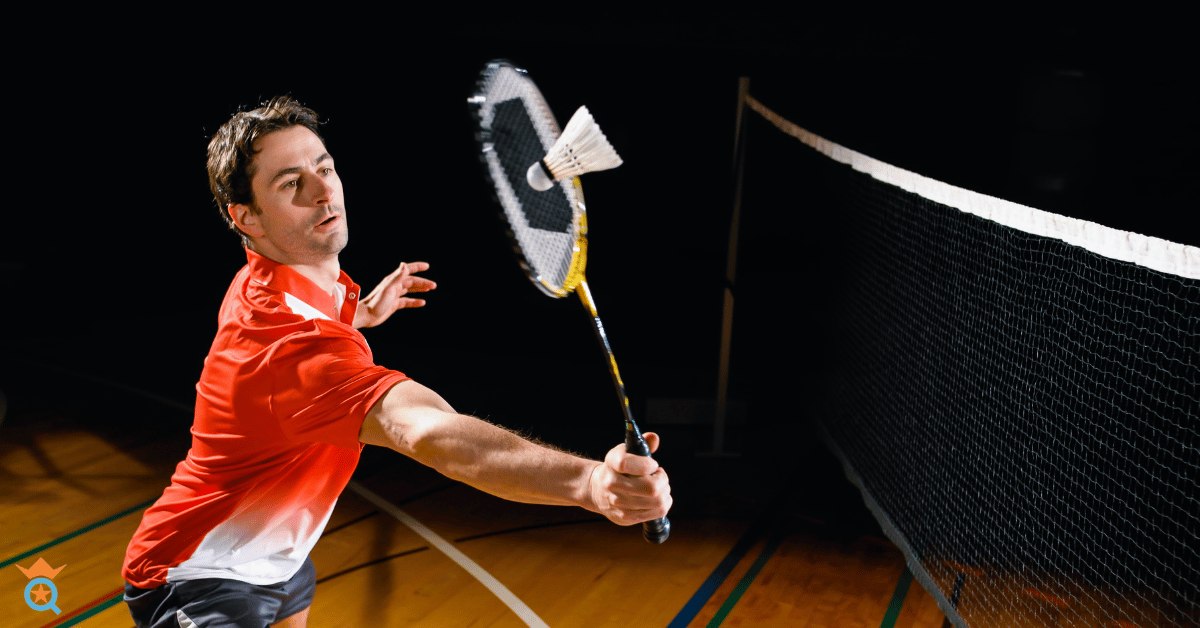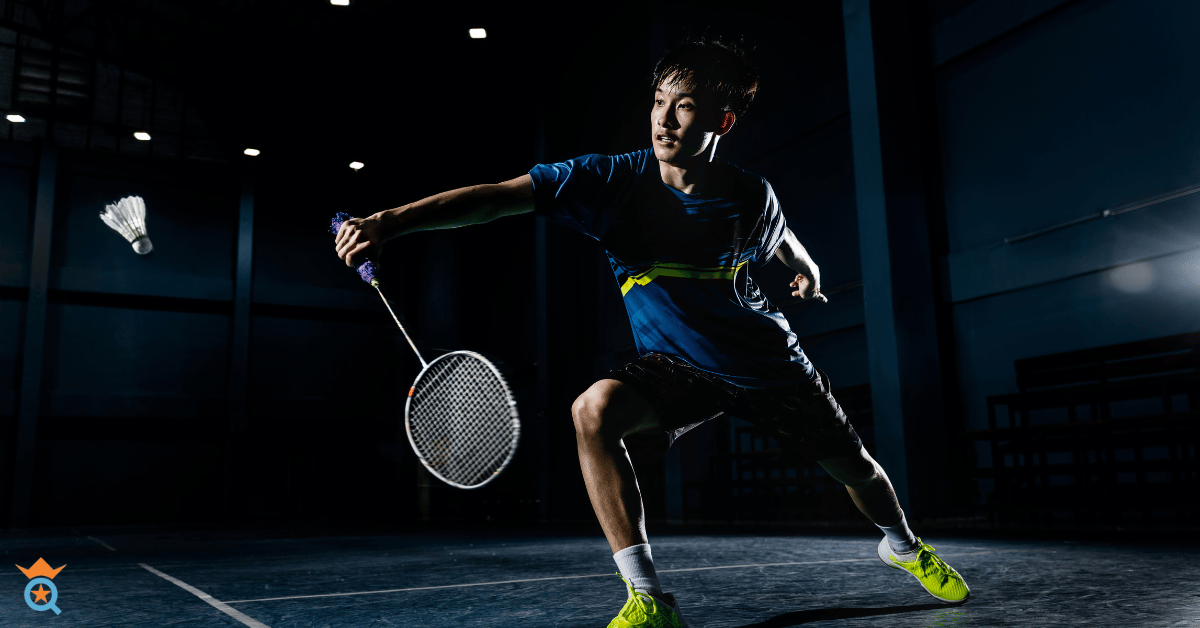Badminton, a thrilling sport, is replete with dynamic and fascinating shots. Among these is the badminton drive shot, a key offensive weapon that can drastically change the flow of the game. This comprehensive guide will help unravel the mystery behind the drive shot in badminton, its types, and its optimal use.
Buckle up as we take a detailed dive into the world of badminton drives, shedding light on how and when to perform this remarkable shot.

A Detailed Examination of the Badminton Drive Shot
Imagine you are locked in an intense rally with your opponent. You're both positioned in the mid-court, exchanging volleys at breakneck speed. Suddenly, you see an opportunity and swing your racket with a swift wrist movement. The shuttle glides just over the net, returning to your opponent at a pace they were not expecting.
At its core, a drive in badminton is an offensive shot played within the mid-court region. What makes it unique is its trajectory. The shuttle, after being hit by the racket, stays relatively close to the net but does not ascend much.
It can follow three types of trajectories – descending, horizontal, or ascending. No matter the trajectory, the shuttle does not stray far from the net, which means the most likely response from your opponent to a drive will be another driver.
The drive shot is used most frequently in doubles, where maintaining initiative is critical. These shots come into play when a more offensive shot is not feasible. In singles, however, using a drive can be risky.
It accelerates the rally's conclusion, and if your court position is less than ideal, it might put you at a disadvantage.
Therefore, drives are usually used sparingly in singles games, serving a short yet decisive role.

An Overview of Different Drive Varieties in Badminton
Every badminton shot, including drives, has variations depending on the grip, force, and trajectory used when hitting the shuttle. Before exploring these, it's essential to understand the terms 'forehand' and 'backhand.' For newcomers to the sport, these terms refer to how you hold your racket while executing the shot.
With this basic understanding, we can categorize drive shots into six primary types:
Forehand Drive
- Offensive Forehand Drive
- Flat Forehand Drive
- Defensive Forehand Drive
Backhand Drive
- Offensive Backhand Drive
- Flat Backhand Drive
- Defensive Backhand Drive

Execution Timing of Drive Shots in Singles and Doubles
Badminton drives are common shots used in both singles and doubles games. However, the context and timing of their execution vary greatly between the two.
In singles, drive shots carry an element of risk and should be utilized with caution.
Since these shots are fast and are often executed from a non-optimal court position, it can be challenging to respond to your opponent's return. Therefore, it's advisable to use drives in singles when you have a favorable court position and believe the shot could potentially end the rally.
Conversely, in doubles, drive shots are frequently used. As the court is shared between two players, each player has less ground to cover, resulting in faster rallies.
Drives are an excellent choice when you lack a strong court position but still aim to maintain some control over the game.
They can transform a scenario where you're hitting the shuttle below net height into one where you have the advantage.

The Essentials of Forehand Drive in Badminton
The forehand drive shot is, undeniably, a quintessential element in the game of badminton. Often, it is this shot that steers the game toward thrilling exchanges and spectacular comebacks. The key to mastering this shot lies in understanding the mechanics and mastering the precise execution.
The forehand drive shot is not just about brute force; it's a refined blend of precision, power, and timing. Unlike the backhand drive where the racket makes contact with the shuttle on the backside, the forehand drive is executed by hitting the shuttle on the racket's forehand side.
In performing a successful forehand drive, the real power does not come from a big shoulder swing as one might assume. Instead, the force behind this potent shot is generated from the wrist movement and the bending of the forearm.
Your forearm, acting like a lever, adds to the power and control of the shot, ensuring that the shuttle soars across the net with a swift yet controlled motion.
The positioning of your racket arm is crucial during a forehand drive shot. The arm should extend perpendicular to your body or straight up and down, enabling the snap of your wrist and forearm.
It's essential to maintain this arm position throughout the shot, ensuring that the shuttle is hit at the highest point possible. This positioning not only offers more control over the shot but also lends the shuttle the speed it needs to swiftly pass over the net.
In the wide range of shots that badminton offers, the forehand drive shot and the drop shot are two different entities in terms of trajectory and speed. A forehand drive shot is marked by its straight-line trajectory over the net, while a drop shot is characterized by a more pronounced arch.
The forehand drive shot carries more speed and control, making it a preferred choice when the aim is to seize control of the rally.

Mastering the Backhand Drive in Badminton
The backhand drive, while being akin to the forehand drive, boasts its own distinctive charm and technique in the dynamic world of badminton. It is a captivating shot that requires a good grasp of the backhand grip and deft wrist work. When skillfully executed, it can confound your opponents and give you the upper hand in an intense match.
Although the backhand drive bears similarities to its forehand counterpart, it's the subtle differences that set them apart. As the term 'backhand' implies, this drive is performed using the backside of your racket.
Contrary to the forehand drive where you extend your racket arm perpendicular to your body, the backhand drive requires your non-racket arm to cross your body. This opposite motion lays the foundation for a successful backhand drive shot.
In performing a backhand drive, your wrist and elbow take center stage. The wrist needs to be flicked in the opposite direction to the forehand drive, while the elbow movement, akin to a lever, amplifies the power behind the shot.
Such a motion not only imparts speed to the shuttle but also maintains the element of surprise, making it harder for your opponent to predict or respond.
Understanding and mastering the appropriate grip is pivotal to nailing the backhand drive.
Unlike the forehand grip which is relatively tighter, both the backhand and forehand grips should be relatively loose when performing a backhand drive.
A relaxed grip allows your wrist and forearm to move freely, adding more power and flexibility to your shot.

The Significant Role of Drive Shots in Badminton
The drive shot is a vital skill to master in the sport of badminton. It's a good starting point for beginners, being relatively simpler to understand than shots like the drop shot, which comes in various types.
A significant part of basic badminton drills focuses on mastering the execution of both forehand and backhand drives.
When used correctly, the drive shot can become a powerful tool in a player's arsenal, offering a unique blend of speed, precision, and control.
So, grab your racket, step onto the court, and start practicing your drives today!
Whether you are a novice looking to improve your game or a seasoned player seeking to add more power and accuracy to your shots, mastering the drive shot is a significant step forward on your badminton journey.
Frequently Ask Questions
How do you hit a drive in badminton?
To execute a drive in badminton, you need to position yourself in the mid-court region. Ensure a firm grip on your racket, whether it's a forehand or backhand grip, depending on the shot you intend to play. Utilize the power generated from your wrist movement and forearm bending, rather than relying solely on a shoulder swing. Maintain a perpendicular or up-and-down racket arm position, aiming to hit the shuttle at its highest point. This technique allows you to propel the shuttle with speed and control over the net, resulting in a drive shot.
What is the difference between a smash and a drive?
While both the smash and drive shots are powerful and offensive in nature, they differ in their trajectories and purpose. A smash is a forceful shot played with the aim of hitting the shuttle steeply downward toward your opponent's court, often generating a steep angle. On the other hand, a drive shot in badminton is flatter and executed with less steepness. The primary objective of a drive shot is to keep the shuttle low and close to the net, allowing for faster exchanges and maintaining an offensive position.
What is a backhand drive in badminton?
A backhand drive in badminton refers to a drive shot executed using the backside of your racket. It requires the non-racket arm to cross your body, while your wrist and elbow work in the opposite direction compared to a forehand drive. The backhand drive shot demands a looser grip on the racket, enabling your wrist to inject power and control into the shot. This versatile shot allows you to return the shuttle with speed and accuracy, even from challenging angles.
What is a drop in badminton?
In badminton, a drop shot is a deceptive and delicate stroke where you hit the shuttle softly, causing it to fall just over the net and land close to it. It requires precise control and finesse to execute. A drop shot is typically used to catch your opponent off guard, forcing them to move quickly and make a difficult return. Unlike a drive shot, which aims for speed and power, a drop shot focuses on finesse and creating strategic opportunities to gain an advantage in the rally.








